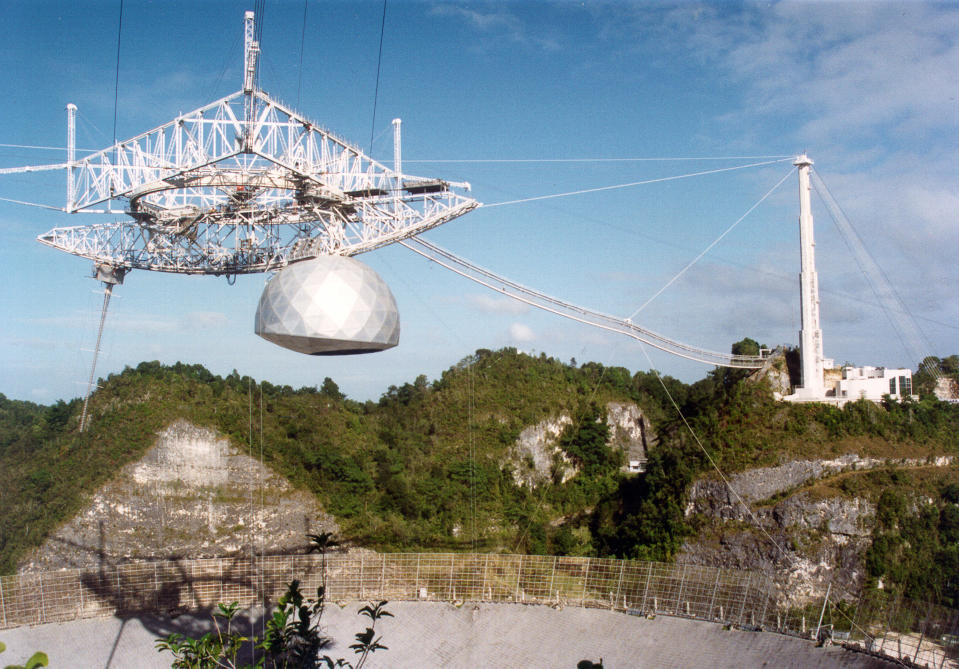Scientists get closer to pinning down source of mysterious radio signals from space

Scientists are closer to pinning down the source of mysterious cosmic radio bursts – and now have a hint as to what might be causing these strange ‘Fast Radio Bursts’.
Based on telescope showing how the radio signals are ‘twisted’, researchers now believe that the bursts may come from a dead star near a black hole.
Fast Radio Bursts (FRB) have puzzled scientists since 2007 – incredibly short, high-energy pulses which last for a few milliseconds and erupt with the energy the sun releases in a day.
Scientists have been genuinely baffled by the signals – and one Harvard expert suggested that the signals could come from alien spacecraft.

New research using data from the Arecibo Observatory in Puerto Rico and the Green Bank Telescope in
West Virginia suggests that the source might be near a huge black hole – or embedded within the remains of a dead star.
The researchers found that radio bursts from an object known as FRB121102 have a property known as polarization, and are “twisted” through a process called Faraday rotation.
Most popular on Yahoo News UK
Driver faces £5,000 fine after ploughing through 20ft puddle to soak mum with pram
Woman who confessed to killing and burying man believed to be her father is charged with murder
‘Total panic’ as armed jewel thieves storm Ritz Hotel in Paris and steal goods worth millions of pounds
Jet Airways hostess is arrested for ‘smuggling $500,000 from India under her shoes and make-up’
M25 rapist Antoni Imiela given seven life sentences referred to parole board
Faraday rotation occurs when polarized light travels through a strongly magnetized, hot gas known as plasma.
Faraday rotation this strong has not been found anywhere else in the universe, though the conditions near the black hole that lies at the center of our own Milky Way galaxy come close.
The home galaxy of FRB 121102 is located 3 billion light-years from Earth; at this distance, the bursts must be nearly 100 million times more powerful than the Sun to be seen from Earth.
‘FRB 121102 was already unique because it repeats, which hasn’t yet been observed in any other FRBs; now the huge Faraday rotation we have detected singles it out yet again. We’re curious as to whether these two unique aspects are linked,’ says Daniele Michilli, a PhD candidate at the University of Amsterdam and ASTRON.
The astronomers hope to distinguish between the two leading hypotheses – either a neutron star near a black hole or one embedded in a powerful nebula – or other, more exotic interpretations, by monitoring how the Faraday rotation and other properties of the bursts change with time.

 Yahoo News
Yahoo News 

